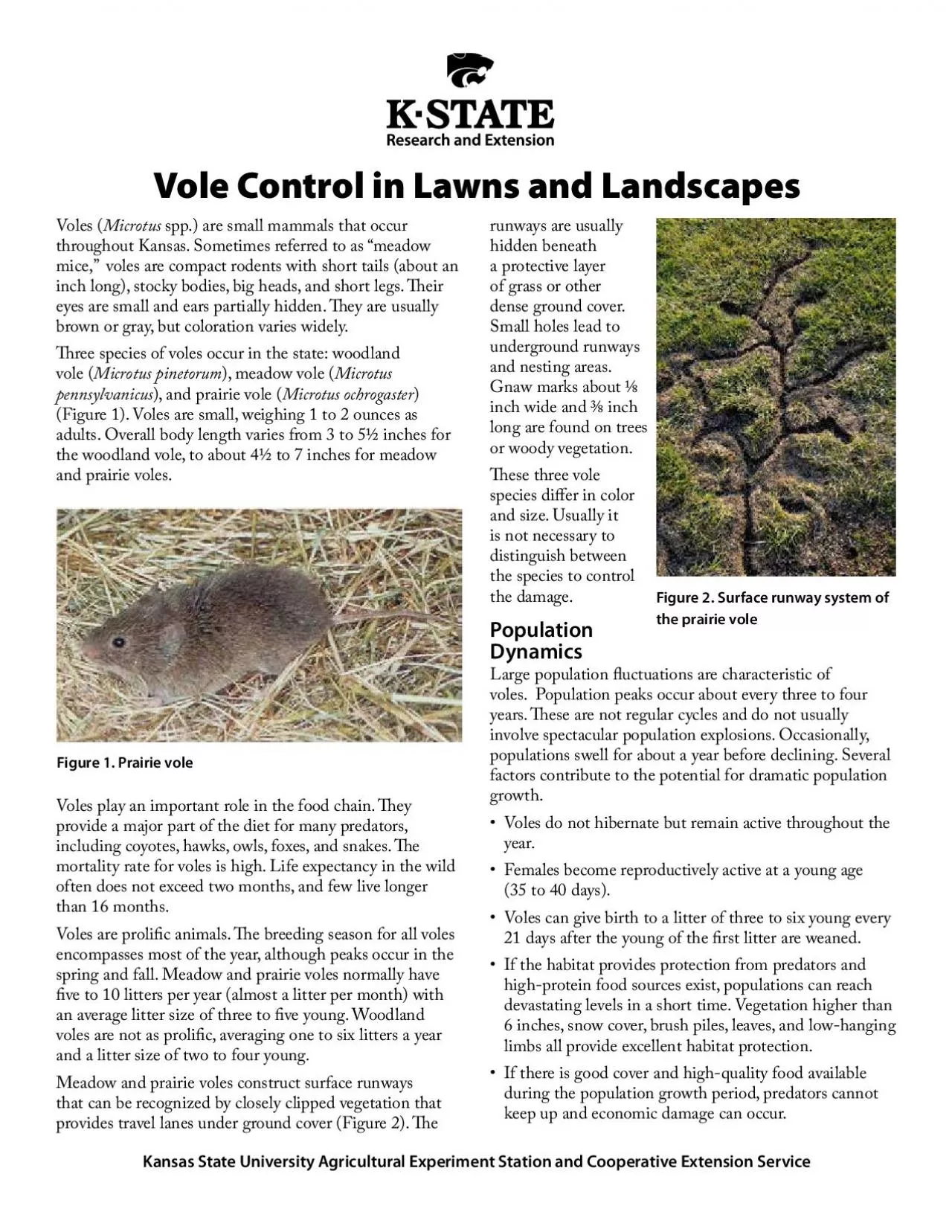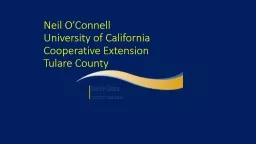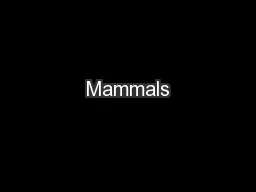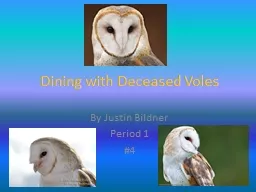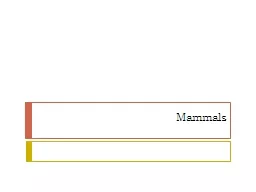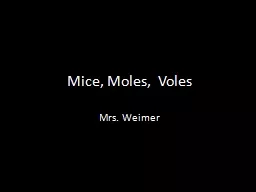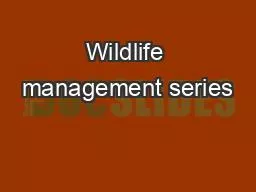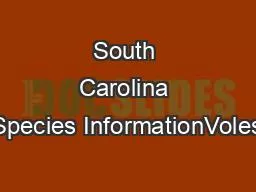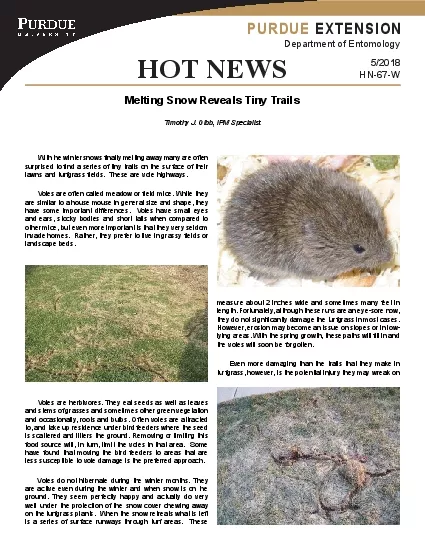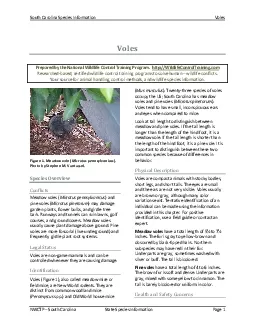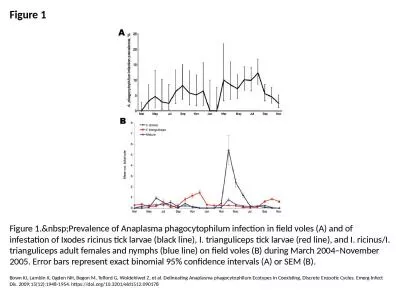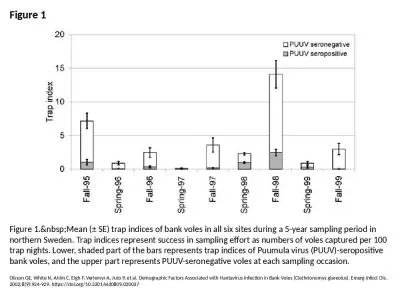PDF-Voles Microtus spp are small mammals that occur throughout Kansas Some
Author : morton | Published Date : 2021-08-08
Figure 2 Surface runway system of the prairie voleFood Habits Voles eat a variety of plants such as grasses legumes and crops corn soybeans alfalfa apples wheat
Presentation Embed Code
Download Presentation
Download Presentation The PPT/PDF document "Voles Microtus spp are small mammals tha..." is the property of its rightful owner. Permission is granted to download and print the materials on this website for personal, non-commercial use only, and to display it on your personal computer provided you do not modify the materials and that you retain all copyright notices contained in the materials. By downloading content from our website, you accept the terms of this agreement.
Voles Microtus spp are small mammals that occur throughout Kansas Some: Transcript
Download Rules Of Document
"Voles Microtus spp are small mammals that occur throughout Kansas Some"The content belongs to its owner. You may download and print it for personal use, without modification, and keep all copyright notices. By downloading, you agree to these terms.
Related Documents

